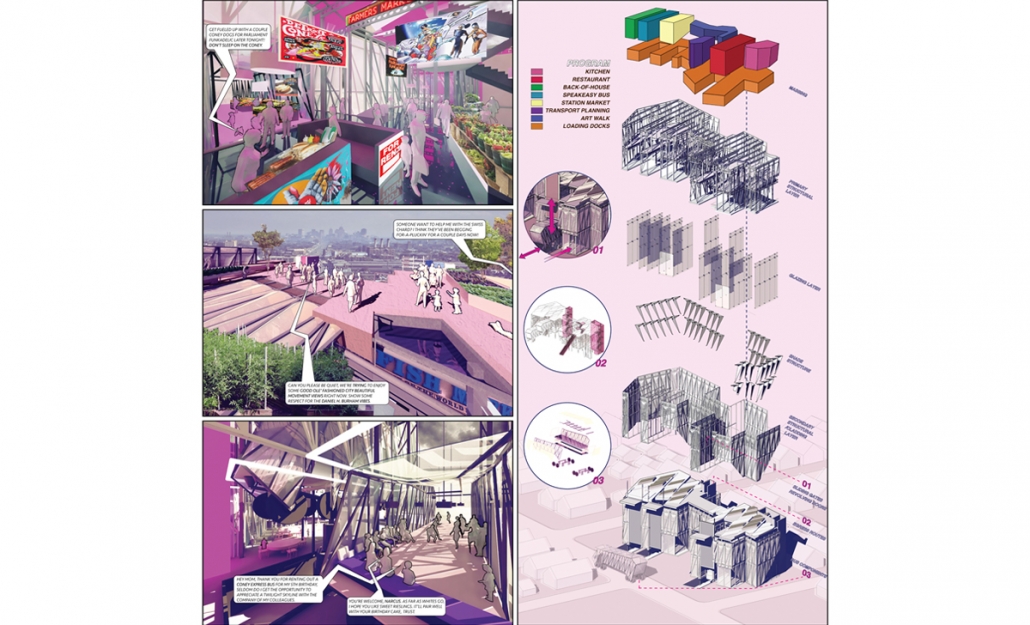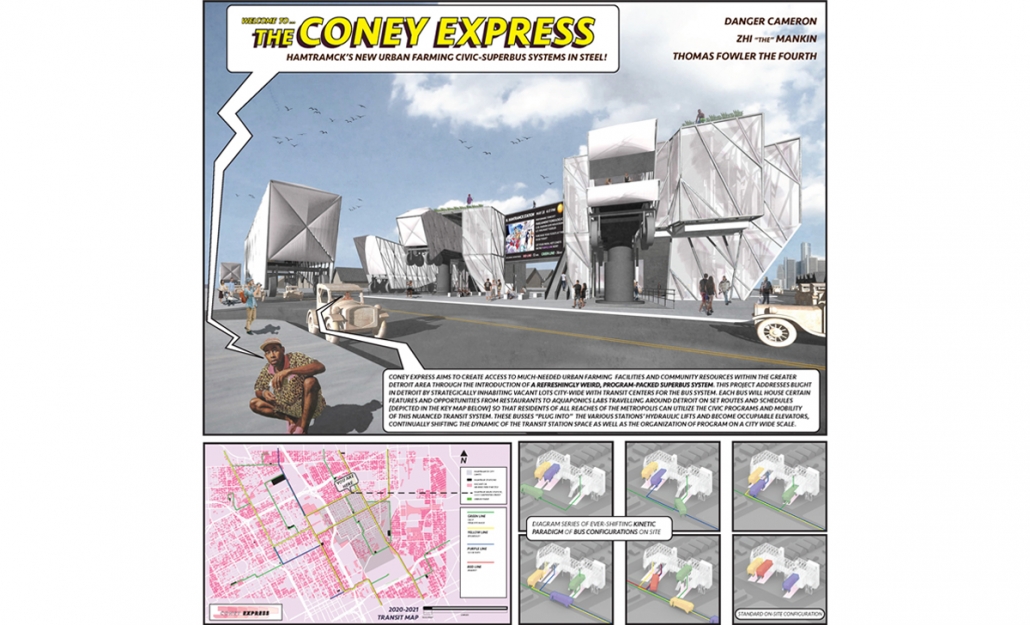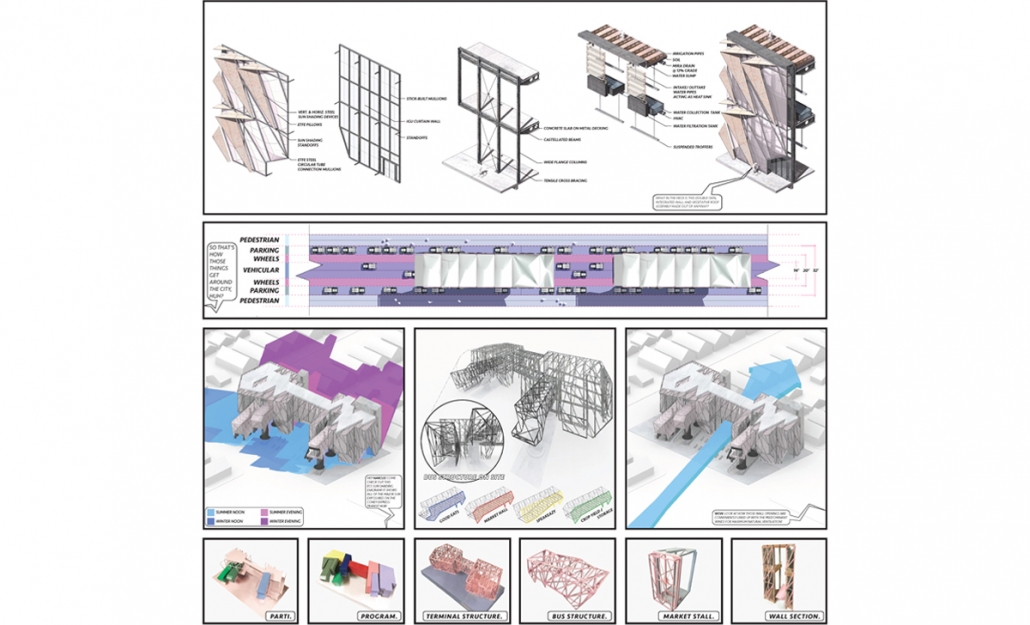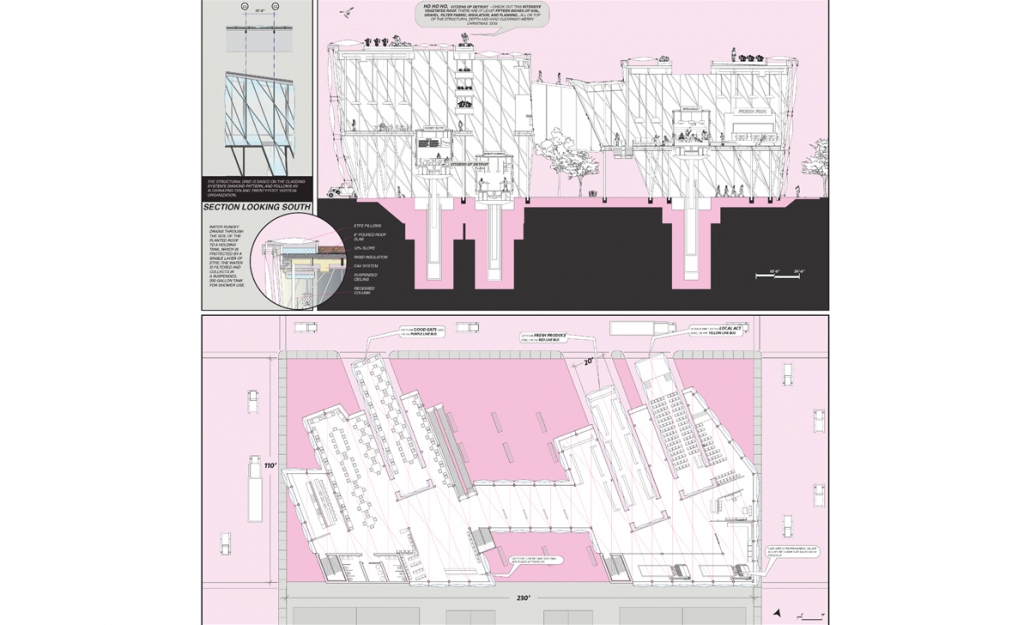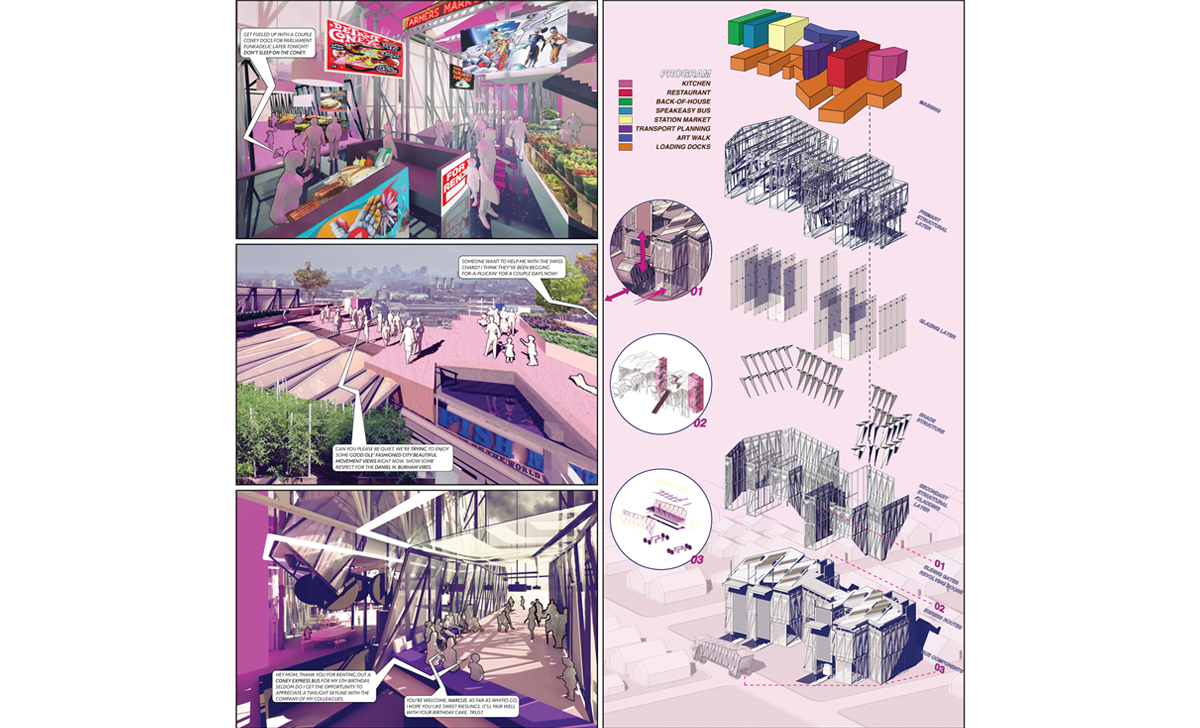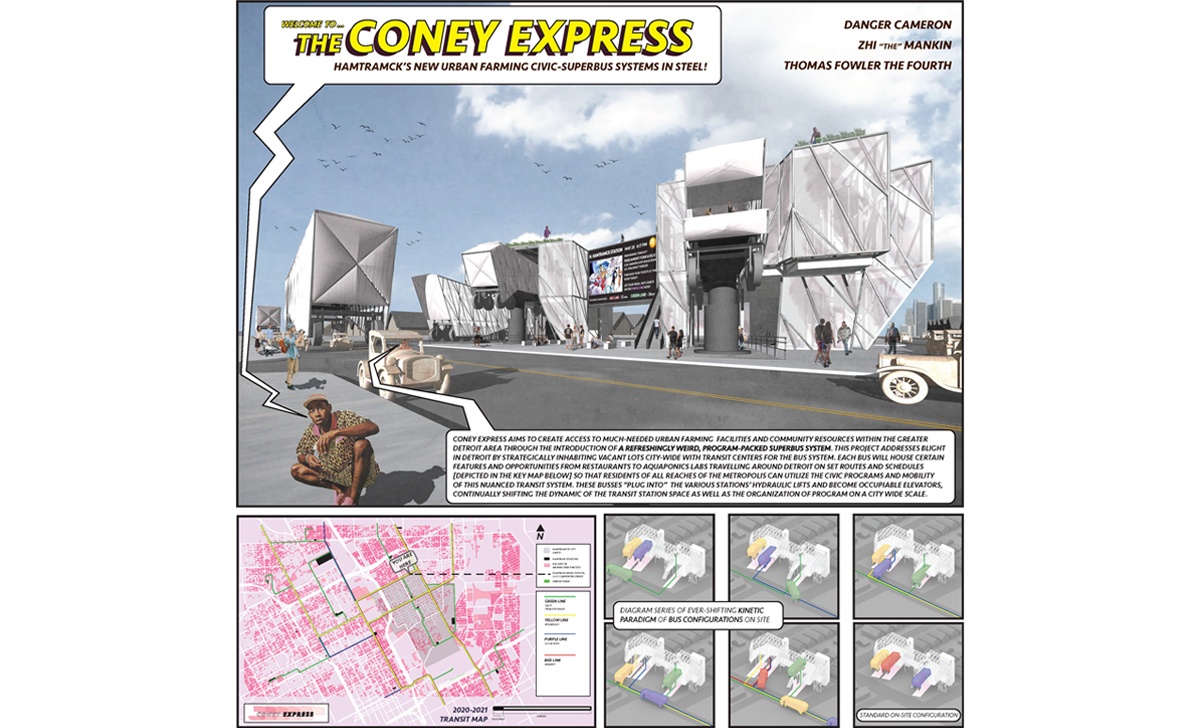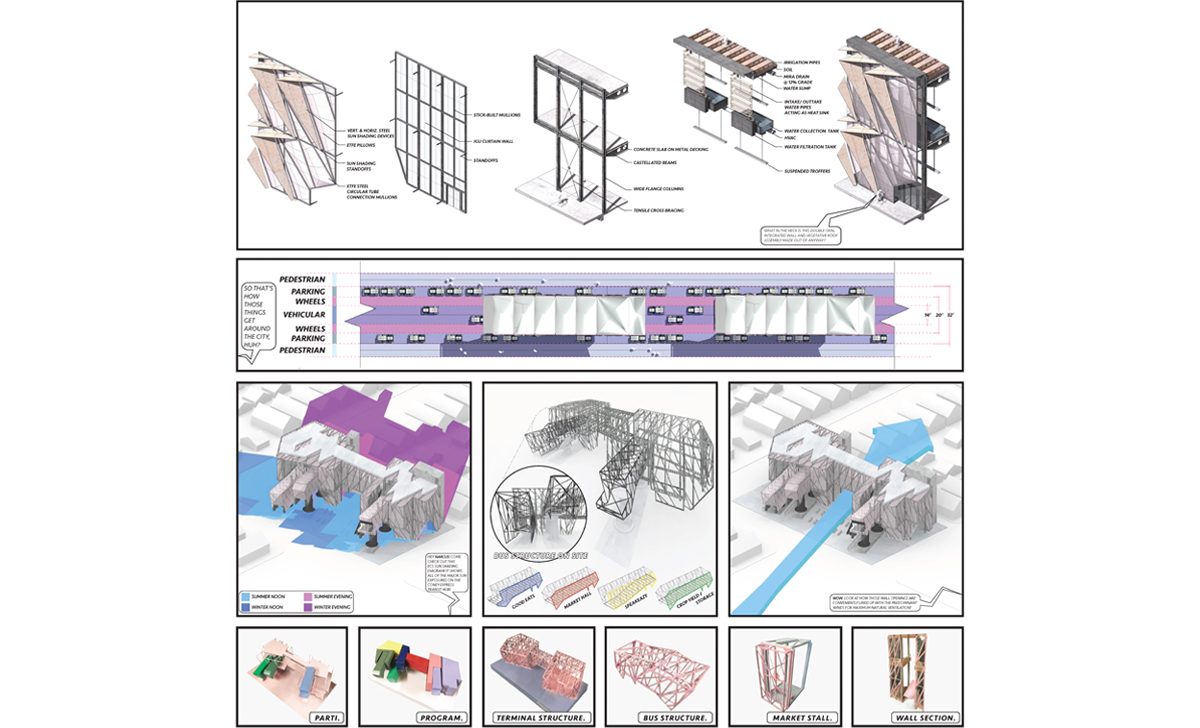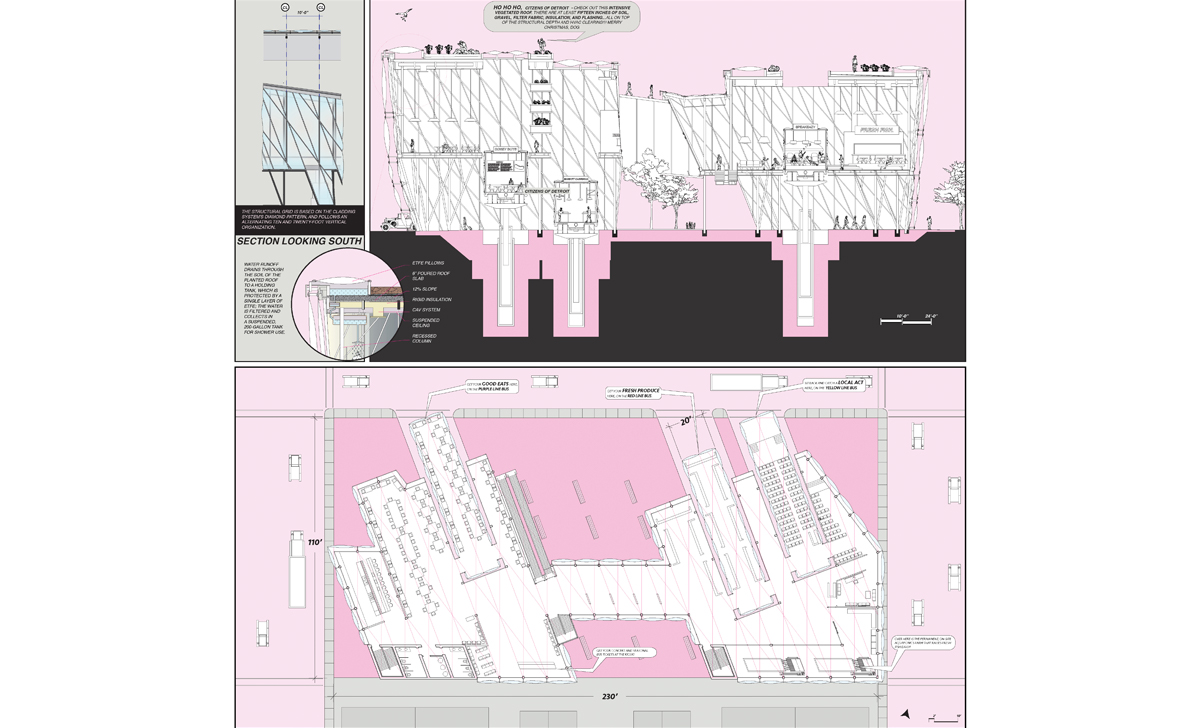2017-2018 Steel Competition Top Ten For Student Winners
Honorable Mention: Open
Zhi Mankin & Dana Cameron
Project Description
Passengers of the Coney Express may travel from station to station, enjoying exciting features and events which are locally unique to each station – this fosters a sense of community identity and pride, while simultaneously inviting non-local residents to engage in events across the city.
While these humongous, steel frame and ETFE-clad busses house eclectic program from speak-easies, restaurants, crop storages, and more, the immobile parts of our intervention aim to provide a supportive “docking” space for these programs.
The bus stations will be strategically placed on vacant lots around Detroit, addressing its issue with blight. By locating these bus stations in areas faced with increased property abandonment, we will create a network of community strongholds and begin to repair Detroit’s urban fabric. In Hamtramck specifically, we aim to attract citizens to the bus station to promote Hamtramck’s blooming multicultural integration and introduce people to Hamtramck’s preciously odd offering of eateries, shops and traditions.
Imagine walking into Hamtramck’s Coney Express station with the intent to use a bus route: you take the escalator from the front, lifting you into the main floor. You are immediately drawn to the kiosk for tickets, but you find there is an anathema of wild activity happening all around you in this greater, open space; you can see three busses stationed on their hydraulic jacks. One of them is blasting homemade funk music and spilling neon lights from its rear. One worker allows travelers to board the bus, and then slaps the door affectionately as the bus lowers itself through the void in the floor and rolls away, resolutely on its way to the next station. You turn around to see the restaurant bus, which looks like it’s being rented by the local sausage factory for a promotion; chefs, kids, workers, and gardeners all pour out with delicious samples of Hamtramck sausages. From the roof above, a troublemaking kid on a field trip drops an onion through the elevator shaft and it lands next to you with a “thud.” You glance up to wave your fist, but are instead shocked by the realization that there is an expanse of urban farming plots up there! You’ve always been curious about how to grow your own food, so you push the button on the sausage bus and board, waiting eagerly for the bus to ascend.
These busses and their stations use a double-layered ETFE pillow cladding system which invites diffused light into the spaces while adding an insulation zone between the inside and the harsh environment. On pleasant days, voids in the roof and second floor created by the bus-elevator cores may be kept open for stack-ventilation and flush-cooling.
The structural nature of the Coney Express is based on local industrial steel vernacular, but adds a secondary cladding system holding the diamond-gridded pillows of ETFE in place. We further celebrate the industrial with exposed castellated beams supporting the double-story roofspace and custom-built hydraulic jacks that elevate the busses.

 Study Architecture
Study Architecture  ProPEL
ProPEL 